Top Best Gravel Bikes Under $2000 [Reviews And Buyers Guide]
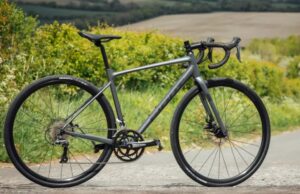 Gravel bikes have won a wide mass of fans of those who are less focused on a specific sports discipline. Dirt bikes are more versatile than road bikes and well-known mountain bikes. They are also called road bikes for bad roads.
Gravel bikes have won a wide mass of fans of those who are less focused on a specific sports discipline. Dirt bikes are more versatile than road bikes and well-known mountain bikes. They are also called road bikes for bad roads.
They are distinguished by wider rubber than highway bikes and large mud clearances. However, the geometry of the frames here is most similar to a road bike, not to touring or cyclocross.
Quick Overview: The Best Gravel Bikes Under $2000
The list below provides the most popular gravel bikes among non-professional users. Probably, you’ll be able to discover your dirt bike among them.
What is a gravel bike?
Gravel bikes have a handlebar in the form of “ram’s horns”. This allows you to find the best position for your hands and change them if necessary, even at high speed.
Gravel bicycles are distinguished by their rugged and reliable construction. Their versatility allows you to move on the most diverse roads, and powerful wheels can withstand high loads. With disc brakes and a sturdy frame, you’ll feel safe and not have to worry about the unit breaking down during long journeys.
Features dirt bikes
Easy handling allows you to maneuver both on city roads and on high traffic trails. The frame of the bike is made of strong carbon fiber, which greatly improves the performance of the bike.
The presence of a strong and reliable luggage mount, with which it is not afraid to go on long journeys.
Frame structure. The large angle of the upper tube allows you to relax your body as much as possible during the ride and take the most comfortable position for yourself.
Wide and powerful tires with a diameter of 35 millimeters. Soft rubber provides quality grip, due to which you feel confident while riding.
Disc brakes. They allow to move with comfort on different surfaces, to feel the road and to brake in time, if necessary.
Low weight. Gravel bikes are distinguished by their lightness: their weight does not exceed twelve kilograms.
Top Rated Gravel Bikes Under $2000
When the selection given below was made by us, we refused from expensive models of high-profile brands as paid attention to best gravel bikes under $2000 among less known brands that still provide products of decent quality.
#1. SAVADECK Gravel Bycicle – Best Carbon Gravel Bike Under 2000
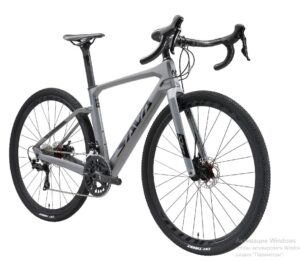 More and more people are beginning to like carbon gravel road bikes. Why, you ask? Well, for starters, they’re incredibly light-weight. The SAVA carbon gravel bike has a T800 carbon brazed frame that weighs in at only 21.8lbs; it’s suitable for both men and women while also increasing riding speed.
More and more people are beginning to like carbon gravel road bikes. Why, you ask? Well, for starters, they’re incredibly light-weight. The SAVA carbon gravel bike has a T800 carbon brazed frame that weighs in at only 21.8lbs; it’s suitable for both men and women while also increasing riding speed.
Secondly, the frames are sturdy and built to last – perfect for those long rides with loads of gear. Finally, gravel bikes offer the best of both worlds between mountain and road biking conditions; they can be ridden on all kinds of terrain making them highly versatile machines indeed.
Features
I’ve always wanted to buy an all-terrain bike that I could take off-road, but I haven’t been able to find one that I like. However, when I saw this bike, I knew it was the one for me. The bike arrived in good condition and was easy to put together.
Plus, the customer service team reached out to me right away to make sure everything was okay with the purchase. That was a nice touch.
The bike is fantastic. The all-carbon Gravel has the capability to go off-road like a dirt bike, but also has the speed and agility of a road bike. Additionally, the brake system is great with disc brakes that pack a punch–yet the assembly isn’t too complicated. Furthermore,the bike boastsa simple yet elegant design , while also coming in several different colors . Of all gravel models available , this one gives you he most value for your money!
- T800 carbon fiber frame
- Internal cable routing design
- Shimano 105 R7000 shifter levers
- KMC chain
- One-piece crankest
- Comfortable saddle
- 700C*40C CST tires
- Seat tube and handle is not brand Sava
#2. Tommaso Monza – Best Aluminum Gravel Bike Under 2000
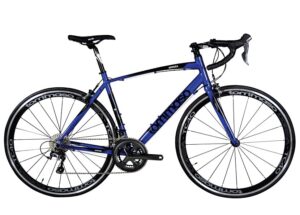 This bike is a great deal for an entry level road bike. It’s only 20 pounds, which is lighter than some other brands (like Schwinn), and the Shimano gear works efficiently. Other brands selling at higher prices have lower quality gears. On my first ride with this new bike, I went 15% faster than before. And I think I can improve even more over time!
This bike is a great deal for an entry level road bike. It’s only 20 pounds, which is lighter than some other brands (like Schwinn), and the Shimano gear works efficiently. Other brands selling at higher prices have lower quality gears. On my first ride with this new bike, I went 15% faster than before. And I think I can improve even more over time!
The manufacturer delivered the product on time and without any issues. I was planning to have a bike shop put it together for me, but after watching an instruction video on the company’s website, I feel confident enough to assemble the bike myself. The bicycle arrived ready for assembly; I just need to attach the handlebar and front wheel before tightening the screws with Allen keys (which were not included).
I needed to watch additional YouTube videos to learn how to adjust the brakes, but I feel that this provides me with a good opportunity to expand my knowledge about bikes.Recommendation
The size of this bike is another reason I picked it. I am 5’7″ tall, and normally fall between the sizes Small and Medium. The choice of which size to pick is now open. According to Tommaso’s sizing chart, I fit comfortably into a Small on my new bike.
I double-checked the detailed geometric data (such as the length of the top tube, seat tube, stand-over height etc.) against others. To make an online purchase without trying out the bike, I felt confident enough in the new bike size that it would fit me well. So far, I’m loving my new bike!
It’s normal to have to adjust your posture a bit every time you get on a new bike. You’ll get used to it. And that doesn’t mean the bike isn’t the right size for you. I’m using this bike as a benchmark for other road bikes I might buy in the future.
The Tommaso Monza Endurance Aluminum Bike comes with an owner’s manual, which I believe is useless because it was intended for a variety of different types of bicycles. The package includes miner parts (particularly light reflectors), but no instructions on how to attach them.
I think the firm can do a better job in terms of Assembly, maintenance, and usage instructions to make people’s first experience with a road bike as painless as possible. And I don’t even know how to change gears with a road bike. I have to look online for instructions every time. Even so,I’m content with the purchase and will learn more about it as time goes on.
- Lightweight and Nimble Design
- Fantastic Value
- SLA aluminum frame
- Tommaso HCT Carbon fork
- Full Shimano Tiagra 4700 groupset
- Tommaso TC40 Aero wheels
- No disc brakes
- Basic Shimano pedals
#3. HeartsBio Carbon Bike
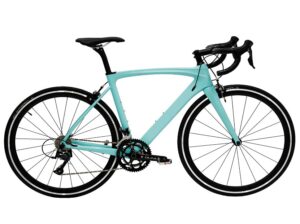 If you’re looking for an affordable, lightweight carbon fibre road bike that looks great, the HeartsBio Carbon Road Bike is perfect for you. This bicycle is competitively priced and because it’s made of carbon fibre, it’s much lighter than other bikes on the market. It’s perfect for anyone who wants to upgrade from their current situation and buy a new road bike.
If you’re looking for an affordable, lightweight carbon fibre road bike that looks great, the HeartsBio Carbon Road Bike is perfect for you. This bicycle is competitively priced and because it’s made of carbon fibre, it’s much lighter than other bikes on the market. It’s perfect for anyone who wants to upgrade from their current situation and buy a new road bike.
The HeartsBio Carbon Road Bike has a lot of features that you would normally expect to pay more for! It is lightweight, agile, and comfortable; plus, it comes with a carbon fiber frame at only 18.9 lbs. Additionally, the 700 wheels come standard with Continental Ultrasports tyres . Lastly, the bike requires minimal assembly before you’re good to go!
This model comes with Shimano Sora gears and derailleur, as well as an ergonomic saddle designed to minimize pressure on long rides. Additionally, it comes with free support from the team at HeartsBio in case you need help setting it up. You’re sure to be impressed by theModel H’soverall quality–it really is a great bike!
- Simple and Easy-to-install package
- Today T700 Supreme carbon fiber frame
- Lightweight bike
- Rides smoothly
- Shimano SORA 18 Speeds
- No
#4 KOOTU Carbon 700C Gravel Bike
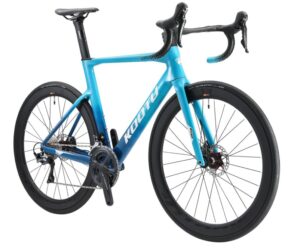 Once you put on the front tire and handlebars, your bike is pretty much complete. It comes with affordable peddles too. This bike is not only great for gravel riding, but because it can accommodate 700×28 tires, you can use this road training as well!
Once you put on the front tire and handlebars, your bike is pretty much complete. It comes with affordable peddles too. This bike is not only great for gravel riding, but because it can accommodate 700×28 tires, you can use this road training as well!
And to top if off–it’s shockingly good-looking. Mine weighed in at 21.6 pounds after assembly, which was exactly what I was expecting given the solid build of this Ultegra-equipped machine.
All things considered, there’s really no need to spend more money on another gravel bike when this one will do the job perfectly well..
This is a Gravel Road bike. A gravel road bike designed for riding on such terrain. Compressed rail trail, however, is the greatest!
But it’s also a regular road bike for me. I like that I can ride in the woods and run over little twigs, pine cones, and acorns with no fear of getting injured. To avoid obstructing the route, remove the trail to pass around people.
- Looks sharp
- Shifts fine
- Nice ride
- No
#5 Diamondback Bicycles Haanjo 5C Carbon Gravel Adventure Road Bike
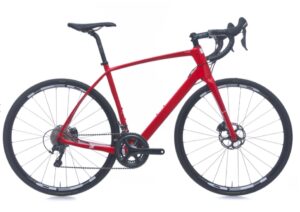 During the week maybe you use bike to get to work. But sometimes you need to turn off the noise of the outside world, grab some camping gear and escape. You’d love to unplug and hit the trails, on a bike you get the solitude of nature but enough speed to cover more ground.
During the week maybe you use bike to get to work. But sometimes you need to turn off the noise of the outside world, grab some camping gear and escape. You’d love to unplug and hit the trails, on a bike you get the solitude of nature but enough speed to cover more ground.
Haanjo 5c is light with sturdy components, bar and shifters, and mechanical disc brakes, which allows to make easy adjustments on the fly. Bike don’t take up much space, allowing for a low profile when camping.
The bike’s frame and fork are both light yet durable, making it perfect for conquering any terrain. The Shimano drivetrain is strong and can handle even the roughest roads, while the 27.5″ rims with 2.1″ tires provide a smooth ride. Plus, since you’ll never know when you might need to make a repair out in the middle of nowhere, this bike is equipped with mechanical disc brakes and bar-end shifters for easy maintenance.- Lightweight and comfortable Carbon frame
- Endurance geometry
- Smooth and precise handling
- Ultra wide and durable Shimano 3×9 drivetrain
- TRP Spyre C mechanical disc brakes
- Difficult to change gears while braking
- Tires are noisy on pavement
- The front wheel’s 12mm thru-axle

#6 Royce Union RGF Gravel Bike
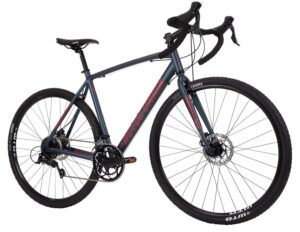 The lightweight aluminum frame on this Royce Union RGF is a top-rated gravel bike. A wide 18-speed Shimano cassette with comfy gearing for both pavement and gravel road surfaces gives you plenty of options.
The lightweight aluminum frame on this Royce Union RGF is a top-rated gravel bike. A wide 18-speed Shimano cassette with comfy gearing for both pavement and gravel road surfaces gives you plenty of options.
The WTB Volt seat stays comfortable for extended periods of riding. The RGF comes with WTB Nano tires, which are both low rolling resistance and great on gravel roads. You can stop precisely and securely every time with the help of two Shimano disc brakes.
21-inch aluminum rigid hardtail frame is strong and light; the bike only weights 26.9 pounds. 18 speeds are provided by the Shimano Sora 9-speed index & shift, with a 11×34 cassette, Neco alloy 3-piece crank.
WTB Alloy Rims with WTB Nano 700c Tires The WTB Volt saddle is quite comfy on long rides. Dual Shimano disc brakes (not included is a kickstand).
- Bike’s tight steering
- RGF is a good basis for an electric conversion
- Lightweight and easy to carry
- Great bang for one’s buck
- Tires feel sturdy and comfortable
- Reach is a bit short and the wheel does clip the front of the foot on hard turns
- Not the lightest bike

Best dirt bikes – Buying guide
When choosing a bike, you should consider your riding preferences. If you plan to travel long distances – gravel bike design allows you to install larger tires, which will provide quality grip on the surface and will guarantee your safety and comfort of movement.
For flat roads suit the wheels with a diameter of 28-32 millimeters – this will be enough to feel confident. And for mountain trails and flat terrain, wheels with a larger diameter are preferable.
What kind of terrain will you be riding on?
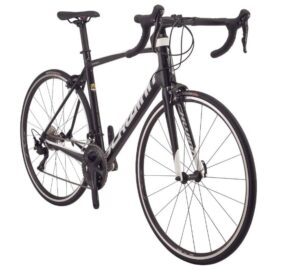 Gravel bikes come in a wide range, from almost highway bikes to almost mountain bikes. The designs have diverged this way because people use gravel bikes in different ways.
Gravel bikes come in a wide range, from almost highway bikes to almost mountain bikes. The designs have diverged this way because people use gravel bikes in different ways.
That’s why it’s so important to be honest with yourself about how and where you plan to use that bike, and to be honest about your own level of comfort off-road.
Are you going to ride on asphalt and dirt roads in a 50/50 ratio? Then you’re at the end of that spectrum. You probably want something closer to a road bike.Are you going to ride rough trails and maybe even singletrack? Then a bike that borrows its geometry and design from mountain bikes is probably for you. It’s important to consider your own level of off-road riding skills as well. Some gravel bikes are long and stable, which inspires more confidence on loose surfaces for riders accustomed to asphalt. Other gravel bikes are designed to be more playful, but they tend to be less forgiving of mistakes.
Match the geometry to your terrain and driving style
When you review your bike’s geometry, look for a few key figures to determine how this bike is likely to feel. The most important figure is trail. It’s not the only figure that matters – far from it. But it is a good indicator of the bike’s intended use and what the engineers hoped to achieve when they first sketched out ideas for the new model.
Trail is a combination of fork offset and head angle. Simply put, the greater the value of the trail, the more the bike will resemble a mountain bike. Longer trail figures make the bike more stable at speed, but with slower handling. Smaller trail figures will cause the handling to be more like a road bike, less stable at speed, with faster, more maneuverable handling.
Most road bikes have trail in the 55-61mm range. Modern mountain bikes are in the 80-100mm range. If you can’t find a trail figure, the handlebar tube angle is a good enough substitute. Numbers below 71 degrees tend toward the end of the spectrum for mountain bikes; higher numbers will be more maneuverable, like a road bike.
Gravel bike gearing
Consider the gravel spectrum again – do you want your gravel bike to behave more like a road bike or more like a mountain bike? 1x or 2x setup? For example, 1×11 would mean only 11 gears and 2×11 would mean 22. More isn’t always better, so it’s not a one-size-fits-all decision.
2x setup
If you’ll be spending more time on the road or on relatively smooth gravel, going up and down hills quickly, a 2x gravel crankset is probably the right fit for you.
The extra gears, available at 2x, make it easy to find the perfect range. The two chainrings on the front provide more range and less distance between the gears.
Cyclists who need exceptionally light movement to carry supplies up steep slopes often need 2x or even 3x magnification. Fast riders who spend a lot of time racing may also want to optimize pedal speed with a 2x setup.
The dual front sprocket will provide a good range of gears, and it will also keep a small gap between each gear. This is the reason why most road bikes still use 2x systems.
1x setup
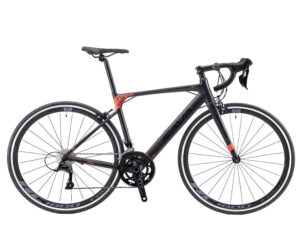 If you spend more time on trails and rough roads, take an example from the mountain bike world and use 1x transmissions with a clutch rear derailleur. 1x systems with only one front sprocket offer the same range from highest to lowest gear (sometimes even more range if you’re using something like the SRAM Eagle), but have fewer intermediate stops.
If you spend more time on trails and rough roads, take an example from the mountain bike world and use 1x transmissions with a clutch rear derailleur. 1x systems with only one front sprocket offer the same range from highest to lowest gear (sometimes even more range if you’re using something like the SRAM Eagle), but have fewer intermediate stops.
Mountain bikers use 1x systems because they’re easier, and because they’re better suited for large and frequent speed changes-imagine flying downhill for 100m and then going up sharply on a short, steep climb. Shifting the front sprockets in such situations is a sure way to fail. Many also appreciate the simplicity of the 1x drivetrain. There’s less to go wrong and less to think about.
The main argument for 1x gear is simplicity. Many people will tell you that it weighs less and breaks less, but when used, these are minimal problems. What you’ll notice on every ride if you choose the 1x transmission is that you don’t have to worry about the front sprocket.
If you need a lighter gear, raise the rear cassette, and if you need a stronger one, lower it. This is especially handy when the ride gets heavy and you have a lot going on.
All 1x transmissions will come with a rear derailleur with a clutch. The clutch keeps the pulleys from bouncing and thus keeps the chain in place. Some 2x transmissions have a clutch (like Shimano’s GRX), and while they’re nice, they’re not as important if the front derailleur keeps the chain engaged. The rougher the terrain, the more grip you need.
What size gravel tires do I need?
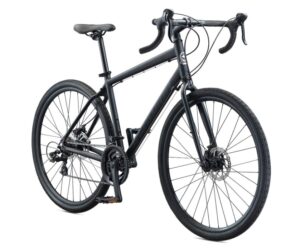 Once you choose a 1x or 2x, switch your attention to the tires. Again, consider where you are on the gravel spectrum. Road racers will be perfectly happy with a bike with a 700 × 40 maximum tire. This is a regular road wheel and a good thick gravel tire.
Once you choose a 1x or 2x, switch your attention to the tires. Again, consider where you are on the gravel spectrum. Road racers will be perfectly happy with a bike with a 700 × 40 maximum tire. This is a regular road wheel and a good thick gravel tire.
The most popular is switching to smaller 650b wheels, which allows you to use more rubber in the same frame. Most gravel bikes these days are 650b compatible.
Many will advertise two different tire clearances, one for the 700c and one for the 650b. Typically, you’ll see something like “Max tire clearance: 700×40 mm / 650×47 mm.” There are also some gravel bikes designed to fit bigger tires with bigger wheels. The Evil Chamois Hager, for example, will fit a 700cx50mm tire. These bikes have the same tire clearance as a mountain bike.
If you’re at the mountain bike end of the gravel spectrum, make sure your gravel bike has at least 45mm tire clearance, whether it’s a 650b or 700c rim. If you’re more of a roadie, 40mm will suffice. Go for a test ride You don’t need a long ride, as your opinion of the bike will be formed in a matter of minutes, not hours.
Wheel size
Start your search for a gravel bike, and you’ll soon find that you’ll be offered a choice of wheel size. When it comes to the best road bikes, it’s almost unheard of to find anything but 700c wheels. Start looking at off-road frames, and there are many more options. 650Bs, also sometimes called 27.5 wheels, are a common option, and some frames work with both. How do you decide which is best for you?
The simplest one is that the 700c wheel is more desirable for less technical riding, and the 650B wheel is better for harder riding. It’s actually much more subtle and less critical than it may seem, but it’s an easy place to start.
If your ride is likely to involve long stretches of asphalt riding to get to off-road riding, the 700c is a better choice. And if you plan to ride off-road mostly on dirt roads with good terrain or smooth trails, the 700c would again be a good choice. If you think your ride will be a little more adventurous, you might be better off choosing a set of 650B wheels.
The total diameter of the wheel and tire combined affects the bike’s handling and frame construction. By making room for a larger tire and wheel, you get a longer frame and less maneuverability. One way frame makers have solved this design problem is to switch to a 650B wheel and tire combination.
With a smaller wheel size, the tire can be larger to have the same outside diameter. A larger tire footprint provides better traction in loose dirt or mud. A larger tire also has more air volume and allows for lower pressure. Lower pressure adds comfort on rough roads.
Whichever direction you go in the beginning, you may change your mind later. Many modern gravel bikes support both 650B and 700c, and the change only requires a new set of wheels and tires. Even if you can’t or don’t want to change wheels, whatever wheel size you have, that won’t stop you. Each has its own advantages, but if you want to use 650B wheels for road riding or 700c wheels on coarse gravel surfaces, changing tires won’t be difficult.
Frame
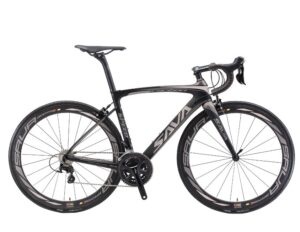 The vast majority of bike frames, gravel or otherwise, use carbon or aluminum as the frame. To a lesser extent, you can find titanium or steel frames on the market. Like wheel size, each material has its advantages, but their disadvantages won’t stop you.
The vast majority of bike frames, gravel or otherwise, use carbon or aluminum as the frame. To a lesser extent, you can find titanium or steel frames on the market. Like wheel size, each material has its advantages, but their disadvantages won’t stop you.
The least common options are steel and titanium. At one point, steel was the only option for bike frames, but as lighter and stiffer options became available, steel almost disappeared. In today’s world, steel and titanium find their way mostly to smaller manufacturers.
Both metals bend in predictable ways, and those who know how to take advantage of this can customize the frame. Titanium is lighter, but also more expensive and harder to work with. Steel is a great choice if you plan to be in remote parts of the world. It’s heavier, but it’s easy to work with, and any craftsman who knows how to weld an axle can fix a broken steel frame.
For most people, the choice will be aluminum or carbon. Aluminum is cheaper and is often seen as a lower quality option. This is a mistake in general, but especially in the gravel world.The main advantage of carbon frames is weight and customizability. Carbon is a much lighter material than any metal, but its specialness makes it special. Using different types of carbon, thickness and direction of weave changes the stiffness. With this in mind, the manufacturer can add or remove flex anywhere in the frame.
Aluminum is less labor-intensive, which saves money, but also requires less customization. As with all metals, it is harder to change the stiffness in just one area of the tube. Aluminum is known for its stiffness, but a quality modern aluminum frame is nice to ride on. Gravel aluminum has a number of advantages. A layer of sand that gets under the frame can rub the paint on an aluminum frame. If it’s carbon, it can really rub the frame itself. Don’t be afraid to choose aluminum and save money on other aspects of the build.
Don’t forget to keep it safe and sound
Once you’ve taken the drastic step and purchased a new gravel bike, your journey is just beginning. Gravel riding is rarely clean, so it is extremely important to keep your bike clean and in good condition. If cleaning your chain after every muddy ride seems like a tedious job, at least make sure you’re lubricating your chain with the best bike chain lubes.
Also, the last thing you want is for it to get stolen, so make sure you take steps to reduce that risk. We have an article on tips on how to prevent bike theft, but here are the key takeaways – make sure you choose the best lock for your bike, know how to properly lock your bike. Get your bike insured and make sure you are covered by the best bike insurance policy for your needs.
FAQs
Can a gravel bike be as fast as a road bike?
The answer to this question is a resounding yes! A gravel bike can be just as fast, if not faster, than a road bike. The main reason for this is that gravel bikes are designed to be ridden on all types of terrain, including paved roads.
This means that they are usually equipped with wider tires that provide more grip and stability on loose surfaces. Most gravel bikes have a lower gear range than road bikes, which makes them ideal for climbing hills and riding over rough terrain.
How many speeds should a gravel bike have?
While there is no definitive answer to this question, most experts recommend that a gravel bike should have at least 10 speeds. This will provide you with enough gears to tackle any terrain, whether you’re riding on paved roads or off-road trails. Having a wide range of gears will allow you to fine-tune your pedaling power to match the conditions of the terrain.
What is the best tire width for a gravel bike?
The best tire width for a gravel bike depends on the type of terrain you’ll be riding on. For example, if you plan on doing most of your riding on paved roads, then narrower tires are ideal.
If you’re going to be spending time on off-road trails, then wider tires are a better option. It’s important to consider the width of your rims when selecting tires. Wider rims can accommodate wider tires, so keep this in mind when making your decision.
Can you convert a road bike to a gravel bike?
With the right components, it is possible to convert a road bike into a gravel bike. However, it’s important to keep in mind that not all road bikes are suitable for conversion. For example, road bikes with rim brakes are not ideal for conversion because they cannot accommodate wider tires.
Additionally, some road bikes may not have enough clearance for wider tires or suspension forks. If you’re unsure whether or not your road bike is suitable for conversion, it’s best to consult with a professional before making any modifications.
Can you ride gravel with rim brakes?
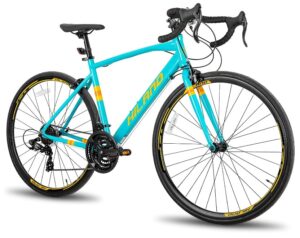 Although rim brakes are not as effective on loose surfaces as disc brakes, they can still be used for gravel riding. It’s important to keep in mind that rim brakes are not as effective in wet or muddy conditions. They can wear down quickly when used on rough terrain. For these reasons, it’s best to use disc brakes for gravel riding. If you’re using rim brakes, make sure to inspect them frequently and replace them if necessary.
Although rim brakes are not as effective on loose surfaces as disc brakes, they can still be used for gravel riding. It’s important to keep in mind that rim brakes are not as effective in wet or muddy conditions. They can wear down quickly when used on rough terrain. For these reasons, it’s best to use disc brakes for gravel riding. If you’re using rim brakes, make sure to inspect them frequently and replace them if necessary.
Disc brakes are the best option for gravel bikes because they provide more stopping power and are less likely to wear down quickly. Additionally, they work well in all conditions, including wet and muddy ones. If you’re using disc brakes, make sure to check the pads frequently and replace them when necessary.
How much does a gravel bike weigh?
The weight of a gravel bike depends on the materials used and the components included. For example, carbon fiber bikes are usually lighter than aluminum ones. Bikes with suspension forks tend to be heavier than those without. Generally speaking, gravel bikes range in weight from 18 to 30 pounds (8 to 14 kilograms).
What is the best material for a gravel bike frame?
Some riders prefer aluminum frames because they are lightweight and affordable. Others prefer carbon fiber frames because they are lighter and offer a smoother ride. It’s up to you to decide which material is best for you. Consider your budget, riding style, and desired ride quality when making your decision.
What are the benefits of a gravel bike?
Gravel bikes offer a number of benefits over other types of bikes. For example, they are more versatile and can be ridden on a variety of terrain. Most gravel bikes have a lower gear range than road bikes, which makes them ideal for climbing hills and riding over rough terrain. Gravel bikes often have wider tires that provide more grip and stability on loose surfaces.
Is a gravel bike faster than a hybrid?
Gravel bikes are designed for speed and efficiency on a variety of terrain. However, they are not necessarily faster than hybrids. This is because hybrids are often lighter and have narrower tires that provide less rolling resistance. It depends on the rider’s preferences and riding style. Some riders may find that a gravel bike is faster, while others may find that a hybrid is more suitable for their needs.
What is the difference between a gravel bike and a mountain bike?
The main difference between gravel bikes and mountain bikes is their design. Gravel bikes are designed for speed and efficiency, while mountain bikes are designed for stability and durability. Gravel bikes typically have wider tires and lower gear ratios than mountain bikes. Mountain bikes also have suspension forks, which can make them heavier and less efficient on paved roads.
What are the best gravel bike brands?
There are a number of gravel bike brands to choose from. Some popular options include Salsa, Specialized, Cannondale, and Trek. Additionally, there are many smaller brands that offer high-quality bikes at a lower price point. It’s up to you to decide which brand is best for you. Consider your budget and riding style when making your decision.
Conclusion
There are a few things to consider when choosing the best gravel bike under $2000. First, think about your budget and riding style. Second, consider the type of terrain you’ll be riding on most often. If you’ll be riding mostly on paved roads, you might want a lighter bike with narrower tires.
If you’ll be riding on rough terrain, you might want a bike with wider tires and a suspension fork. Finally, consider the components you’ll need for your riding style. For example, if you’re planning to ride long distances, you might want a bike with extra water bottle holders or frame bags.